How to connect a Zanussi washing machine
 Having bought a new washing machine, I want to try it out as soon as possible. You can connect your Zanussi washing machine yourself, without the help of a technician. There is nothing difficult about connecting the machine to communications, especially if you already had an SMA before. The main thing is not to deviate from the instructions and follow the basic recommendations.
Having bought a new washing machine, I want to try it out as soon as possible. You can connect your Zanussi washing machine yourself, without the help of a technician. There is nothing difficult about connecting the machine to communications, especially if you already had an SMA before. The main thing is not to deviate from the instructions and follow the basic recommendations.
Suitable place for the machine
The first thing you need to do is decide on the location of the “home assistant”. It is better to choose it before purchasing a washing machine in order to understand what dimensions of the case you can count on. For example, a full-size “front-facing” or “vertical” is suitable for a spacious bathroom; for a kitchen – a narrow built-in model.
Most often, the washing machine is placed in the bathroom. Although the room is small, you can always “stuff” a typewriter into it. Everything is very individual - some install the machine under the sink, others - next to the toilet. The advantage of this placement is proximity to communications, the disadvantage is high humidity.
Another popular place to install SMA is the kitchen. The machine is placed either permanently or built into a set. There are several advantages in this case: proximity to water supply and sewerage, good ventilation, low humidity. The disadvantages are that there may be an unpleasant odor from the items being washed, and if the machine is not hidden behind the furniture façade, then household members will have to witness the entire washing process.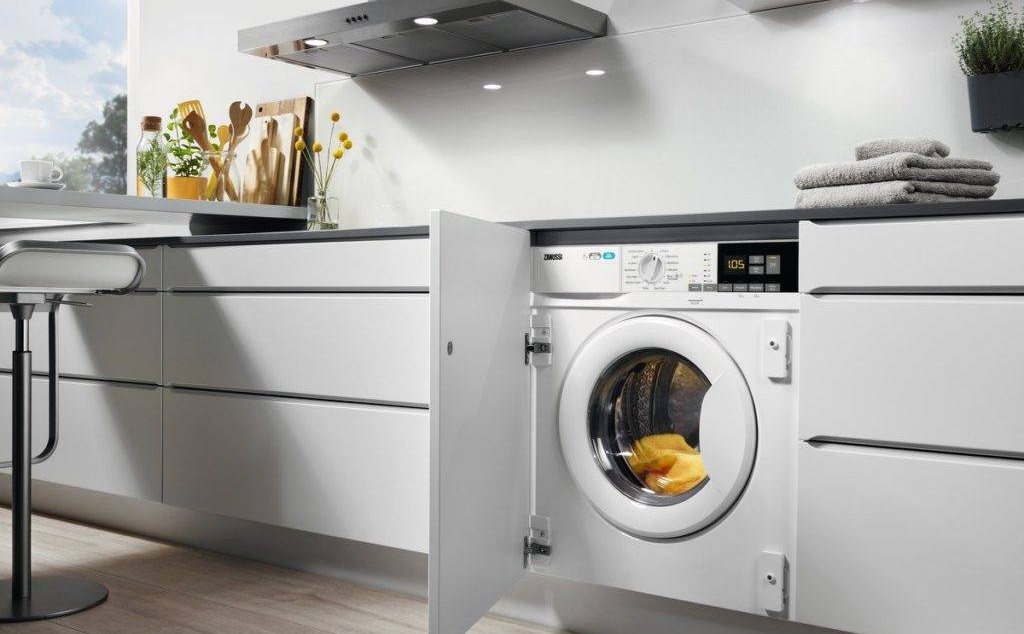
You can also install a washing machine in the hallway or pantry. In large apartments or private houses, there is a separate utility room - a laundry room.There may be problems with communications, but if desired, connecting the machine will still be possible.
The place for the washing machine must meet certain criteria:
- connected communications (it is necessary to ensure water supply to the machine, drainage of waste liquid, power supply);
- hard, level floor (the surface must be stable and straight so that the machine does not tilt or fall during operation; the ideal floor covering is tile or concrete).
Before buying a Zanussi washing machine, decide on the location of its installation so as not to make a mistake with the size of the case.
If the bathroom is too small, you will have to pay attention to the narrow Zanussi models. When there are no problems with free space, you can buy the most spacious, full-size units.
It is not necessary to connect the SMA to centralized communications. If this is a private house, then water can be taken from a barrel and drained into a separate container. The main thing is to think through all the nuances to ensure full functioning of the equipment.
Preparing the machine
After the machine is delivered from the store, you need to give it some time to settle. If it’s cold outside, then let the washing machine “warm up” in the apartment for a couple of hours. During this time, it is better to study the instructions supplied with the equipment. The user manual describes all aspects relating to the installation, connection and operation of the Zanussi SMA.
Next, you need to carefully unpack the machine. Remove all protective elements from the case: film, foam, screed. Look into the drum, maybe there is something there too - take out all the excess.
Be sure to remove the shipping bolts that secure the drum.
The process of removing the bolts is described in the instructions.There can be from 4 to 8, depending on the model of the washing machine. It is prohibited to start the washing machine with the transport screws not removed, as this will damage the equipment.
After removing the transportation bolts, it is necessary to close the resulting holes with special plugs. They come with the machine. After this, the washer will be ready for further manipulation.
Now all that remains is to place the machine in the place provided for it. To connect equipment to water supply and sewerage, you will need access to its rear wall. The first step is to organize drainage, then water supply. After this, the housing is adjusted for level.
Drain system
There are several ways to organize the drainage of a washing machine. The most primitive one is to lower the machine’s hose into the bathtub, sink or toilet. The waste liquid will go first into the plumbing, and from there into the sewer pipe. This option has one advantage - simplicity. More cons:
- the plumbing fixtures will constantly get dirty, plaque will begin to accumulate on the walls of the bathtub or sink;
- this is not entirely safe - household members may accidentally touch the hose, and water will pour onto the floor;
- This method looks unaesthetic.
It is best to connect the washing machine to the siphon. The instructions for the equipment say under what bend and at what height it is recommended to place the drain hose, usually 50-80 cm from the floor. Be sure to take this information into account when connecting the washing machine. If you arrange a point lower, the water can flow out by gravity; higher, the pump will operate under increased load.
If there is already a siphon under the sink or sink with an outlet for the washing machine, then great. It is enough to put the drain hose on the fitting and secure the connection with a clamp.If there is a regular “elbow”, without additional leads, you will have to replace it.
It is also possible to connect directly to the sewer pipe. In this case, you will have to buy a rubber seal. After making the insertion, check the tightness of the connection.
Water supply equipment
Next, you need to connect the machine to the water supply. The inlet hose is included with the Zanussi washing machine. You must act strictly according to the instructions:
- connect the curved end of the inlet hose to a special tube located on the back of the housing;
- shut off the water supply to the apartment;
- cut a water pipe, insert a tee tap into the hole (rubber seals are included with it);
- connect the machine to the tap outlet;
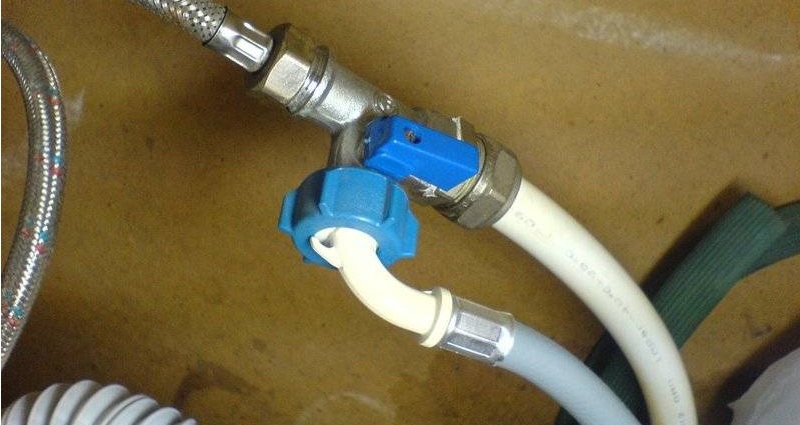
- tighten the fixing clamps (if plastic nuts are used as fastening, then they need to be tightened to the maximum, manually, without using tools).
When installing a tee tap or water socket, it is better to use special sealants.
Even one drop at the joint indicates poor sealing. Therefore, when you notice water on a tap or hose, immediately look for an unreliable area. This will help avoid serious leaks in the future.
Is the machine in the correct position?
The machine, connected to the pipes, can be moved to the wall or placed in a kitchen unit. However, it is too early to turn on the machine; first you need to level its body. A “skewed” washing machine will not work correctly – it will “jump”, vibrate and make noise when spinning.
To adjust the position of the washing machine, you will need a building level. Further actions: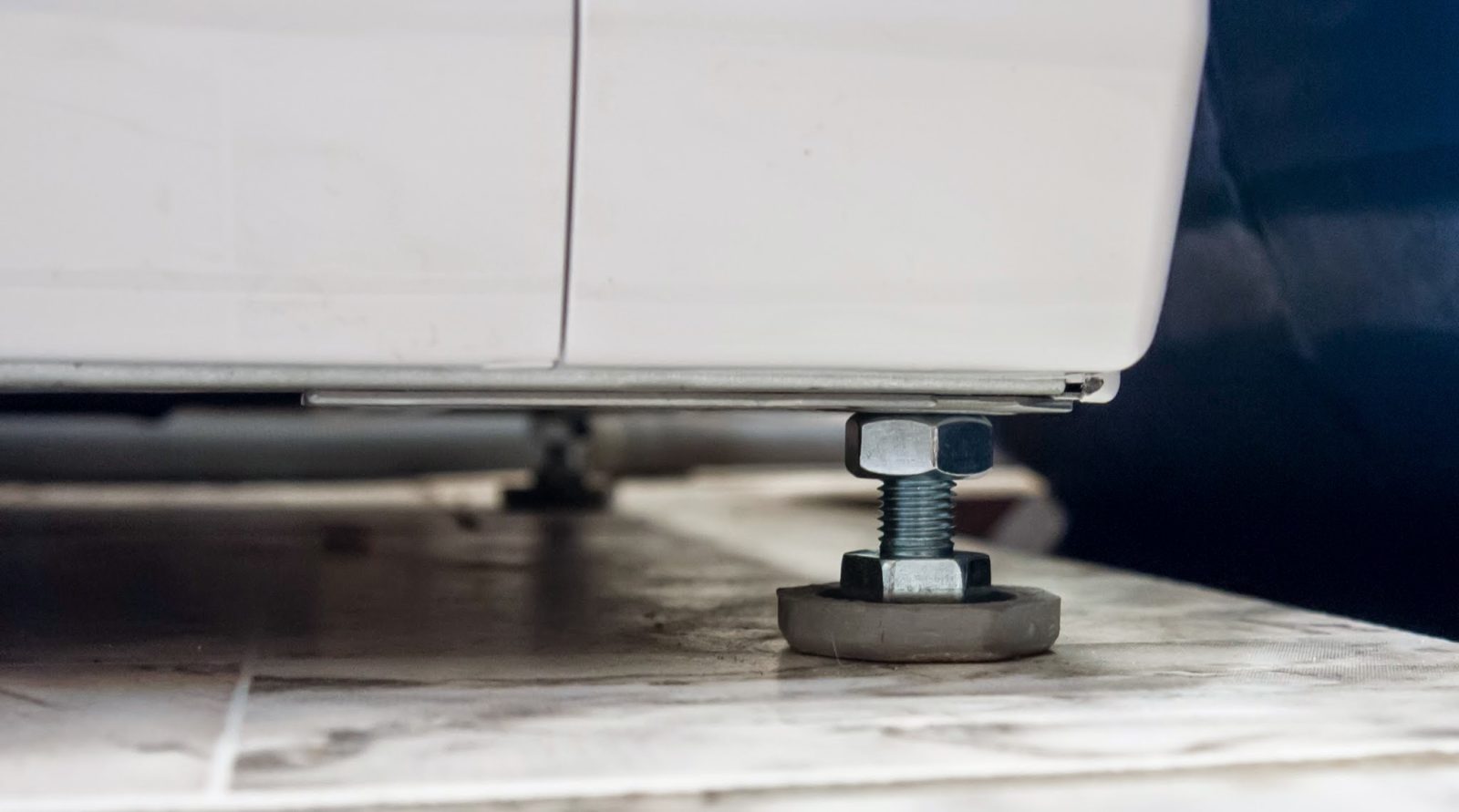
- place the building level on the machine;
- Using the scale, adjust the height of the washer legs;
- check the stability of the MCA by trying to slightly rock the device (if, when pressing on the corners, the machine moves from its place, continue adjusting the legs);
- secure the nuts.
That's all. It is not recommended to operate a washing machine that is not level, as its internal components will fail faster. The shock absorbers will become loose, the drum will become loose, etc.
Experts recommend placing an anti-vibration mat under the machine, or putting special rubber pads on the legs. This will additionally protect the washer and reduce the likelihood of it breaking.
Powering the equipment
The easiest way is with electricity. Just plug the washing machine's power cord into a socket and the appliance will work. However, there are nuances here too. First, you should check whether the existing electrical wiring meets the standards. When powering large household appliances, the following requirements must be met:
- presence of grounding;
- inclusion of a voltage stabilizer and RCD in the circuit;
- the socket has a moisture-proof cover.
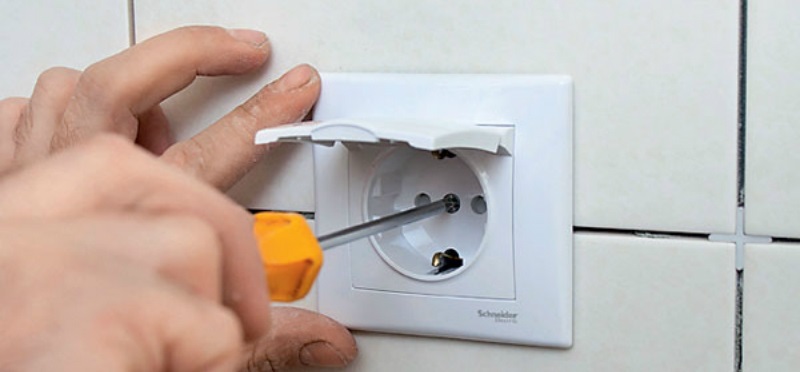
Do not connect the washing machine to the outlet through an extension cord or tee. A separate point must be organized to power the device. The cross-section of the wire must also be suitable to carry out the “power” of the device.
Having finished connecting the machine to the communications and adjusting the body, run a test wash without laundry in the drum. Constantly watch how the washer performs its cycle. This will make it possible to quickly respond to an emergency situation, for example, a leak.
The first cycle must be “idle”. This move will help wash factory grease, dust and debris out of the machine. If you immediately load things into the drum, they will spoil.
Interesting:
Reader comments
- Share your opinion - leave a comment
Categories
Washing machine repair


For buyers

For users

Dishwasher


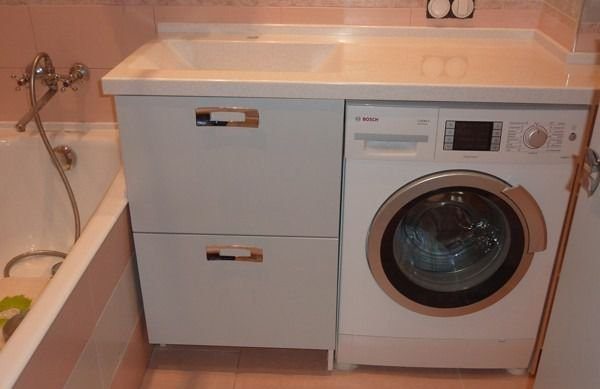
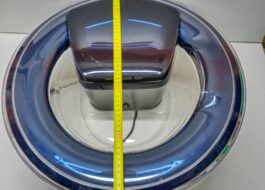

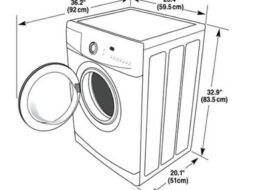
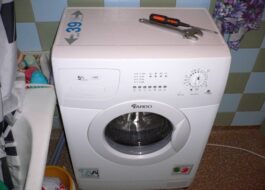










Add a comment